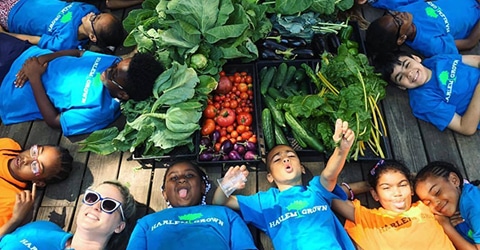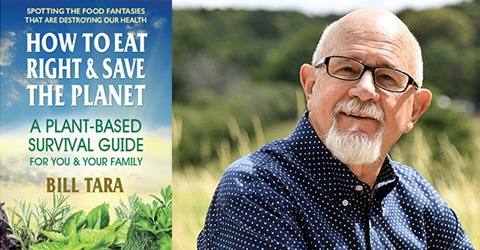
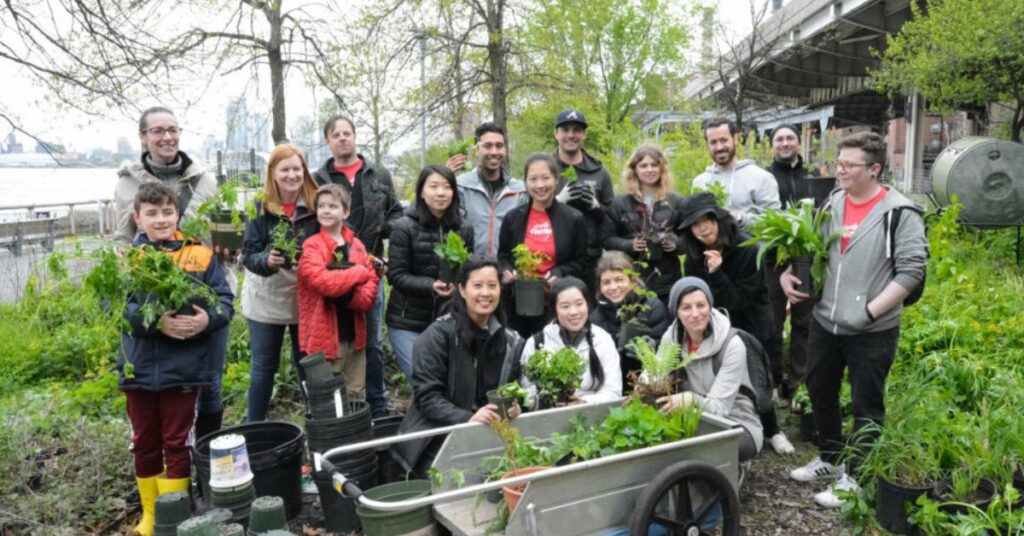
The following is an article from a Community Grant recipient.
Solar One manages Stuy Cove Park, an architect-designed, sustainably managed, two-acre native food forest on land that was once an abandoned industrial site in lower Manhattan. Our mission is to improve community literacy, agency, and competency; and to increase access to real-world solutions related to climate, social, and food justice. Our work centers on Indigenous and peasant-based land management practices, and Stuy Cove Park serves as a living laboratory where we study regenerative urban permaculture solutions to both our messy past(s) and our precarious future.
We believe everyone should know where their food comes from, but unfortunately, most urban communities suffer from a lack of access to both the natural world and the food system at large. As we emerge from our COVID-era cocoons and grapple with the realities of a climate in transition, the immersive experiences offered at Stuy Cove provide the community a radical alternative to that alienation from nature: hands-on opportunities to see, taste, smell, and feel the many gifts Earth still has to offer us, and a space to envision a more just and sustainable future for future generations.
Thanks to our CNS Community Grant, we kicked off an ambitious workshop series this past month. The first session covered “Microgreens as (Urban) Micromodel” and included an hour-long Zoom session focused on microgreens as a launchpad for exploring the basics of soil science, DIY food cultivation, urban resilience, and land repair. The event was co-hosted by Nathan Hunter of the Bronx River Foodway and brought together soil scientist Dr. Anna Paltseva and DIY microgreen growers Journei Bimwala and Charles Reynoso.
Each of these participants brought depth and a unique perspective to the subject. Charles Reynoso, a filmmaker, discussed how his interest in microgreens was initially motivated by wanting to avoid the overpriced greens at his local supermarket but quickly became a holistic part of his mental health regimen, especially when the COVID crisis hit. For herbalist and forager Journei Bimwala, growing microgreens plays an important medical role in her practice of gemmotherapy. We discussed the mediums they each use for growing—Charles uses coconut coir while Journei uses a mix of potting mix and soil from a nearby park—which led to a conversation about the differences between soil and soilless growing media. Dr. Paltseva then walked us through the basics of soil science for gardeners, including how to test for nutrients and contaminants in urban soils.
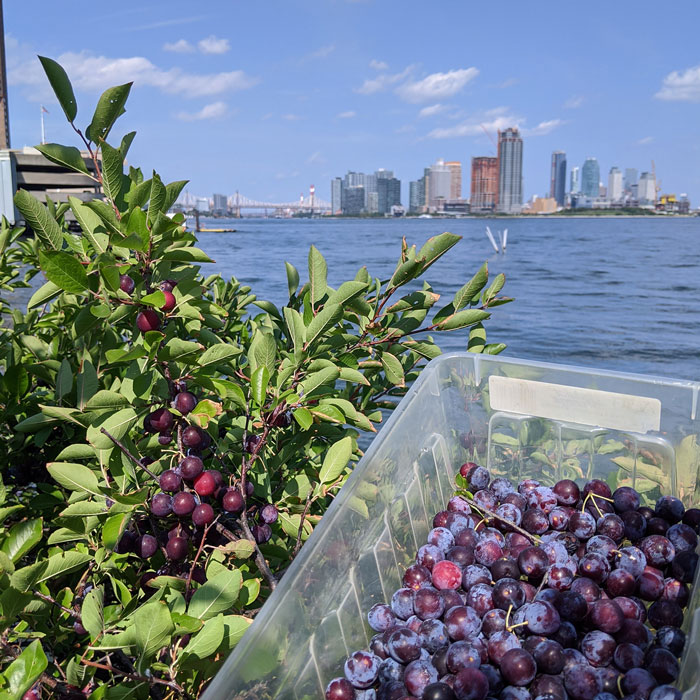
As we emerge from our COVID era cocoons and grapple with the realities of a climate in transition, the immersive experiences offered at Stuy Cove provide the community a radical alternative to that alienation from nature: hands-on opportunities to see, taste, smell, and feel the many gifts Earth still has to offer us.
This workshop shows that even after a brief hour-long session, folks can walk away with a better understanding of critically important subjects, such as what we mean when we say “soil” and what alternatives exist for aspiring urban growers. It also tied in perfectly with some community soil testing events that the Bronx Foodway will be hosting later this spring, and it was great to be able to uplift that work and bring it to the attention of the wider New York City community. Encouraging city dwellers to seize the opportunity to grow food in urban space is critical, but only one part of the challenge. We also have to make sure that folks are literate about the possible risks involved when working with contaminated soils. Workshops like this address both needs.
In addition to community education efforts, we’re doing some of our own urban experiments at Stuy Cove. We currently have, under our office grow lights, some Chenopodium album (aka Lambsquarter, Goosefoot, or Wild Spinach) microgreens whose seeds were collected from a city sidewalk plant last summer. A pervasive city dweller, this species is a delicious, nutritious, drought tolerant, and abundant edible, but this particular plant’s seeds came back from Cornell’s Nutrient Analysis Lab contaminated with 1.67mg/kg lead and 0.09mg/kg cadmium! We are now growing them out in a coconut coir and compost blend and will test the resulting microgreens to see whether they too are contaminated or whether the contamination can be reduced through the germination process. We are conducting similar experiments with two other species, Allaria petiolata (aka Garlic mustard) and Rumex crispus (aka Curly Dock), both of which are commonly referred to as “invasive weeds” in the Northeast but are also wonderful and nutritious foods when grown in clean soil.
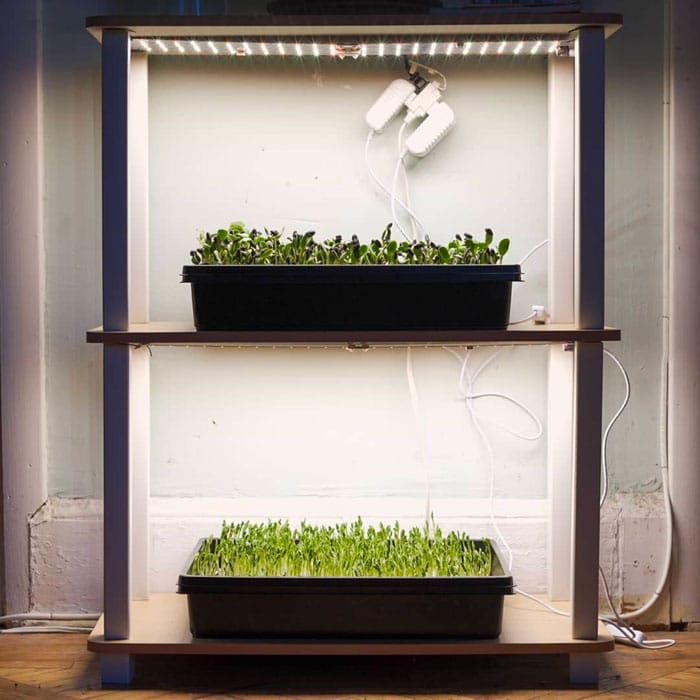
As climate crisis looms and weather patterns shift, the plants that survive and thrive in our most hostile urban environments may prove to be our best allies in building a sustainable food future. These citizen science experiments and our ongoing workshops ask questions about how we can make our streets “clean enough to eat off of” in the future while building a just and resilient food system for all.
The T. Colin Campbell Center for Nutrition Studies (CNS) is committed to increasing awareness of the extraordinary impact that food has on the health of our bodies, our communities, and our planet. In support of this commitment, CNS has created a Community Grant initiative to empower sustainable food-based initiatives around the world by providing grants to enable innovative start-ups and to propel the growth of existing initiatives. Please consider making a donation to this great cause. 100% of your donation will go to support initiatives like the one you just read about in this article.
Copyright 2025 Center for Nutrition Studies. All rights reserved.
Deepen Your Knowledge With Our
Plant-Based Nutrition
Certificate
Plant-Based Nutrition Certificate
- 23,000+ students
- 100% online, learn at your own pace
- No prerequisites
- Continuing education credits



